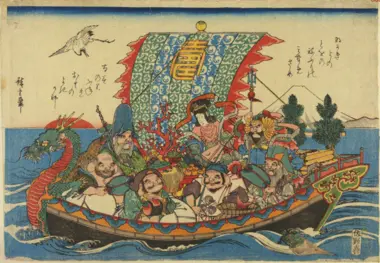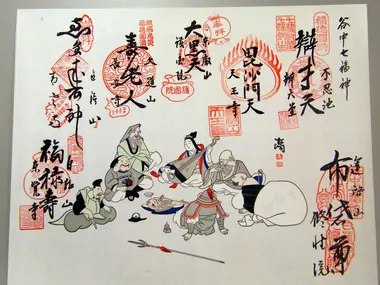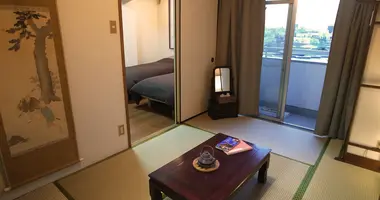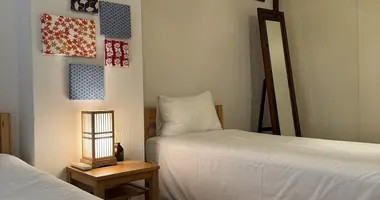Shichifukujin Meguri: The 7 Lucky Gods Pilgrimage in Tokyo 七福神めぐり
- Published on : 07/01/2019
- by : Ph.L
- Youtube

For the new year, go hunting for the seals of the pilgrimage of the 7 lucky gods!
Flick/ eyawlr60
Boost your luck for the new year!
How about a little luck to start the year off right? In Tokyo, the Shichifukujin Meguri pilgrimage is a tradition followed by many locals. Usually organized the first weekend of January in several districts of the capital, this small pilgrimage offers participants the opportunity to collect the seals of seven places of worship. Temples dedicated to 7 Buddhist deities, would bring luck to anyone who came to visit them!
A centuries-old tradition
The first pilgrimage of the lucky gods dates back to Edo (1603-1868), between the 18th and 19th centuries, when the seven gods were often represented on Ukiyo-e prints. True muses for artists, quickly won the hearts of the population. And the idea of coming to honor them to attract happiness and success in the different spheres of daily life (work, love, health, etc.) was quickly emulated in Japan.
However, the deities of the Shichifukujin Meguri are not strictly speaking "Japanese".
Inherited from several branches of Buddhism, most of the deities honored in this pilgrimage are actually of Chinese or Indian origin! A fine example of syncretism, which once again shows the considerable influence of Buddhism throughout Asia.
The 7 lucky gods
- Ebisu
God of prosperity associated with trade and fishing, Ebisu is the only deity of Japanese origin on this pilgrimage.
- Daikokuten
Like Ebisu, Daikokuten is a deity associated with trade. He is also the god of agriculture.
- Bishamonten
As god of war, Bishamonten must defend men against evil spirits.
- Benzaiten
Goddess of the arts and beauty, Benzaiten is a very popular deity in Japan.
- Fukurokuju
Fukurokuju is a god commonly associated with wisdom, luck, and longevity in Asia.
- jurojin
Just like the previous deity, Jurojin is associated with longevity and good health.
- Hoti
Recognized for bringing happiness and luck to his faithful, the god Hotei, therefore, has his place in this pilgrimage.
Go collect your seals!
To attract the good graces of the deities, you will participate in the hunt for goshuin (or "seal" in Japanese) if you begin the Shichifukujin Meguri pilgrimage.
Official seals of places of worship, goshuin are made up of a stamp and calligraphy specific to each temple. They are considered true lucky amulets on paper, and they are collected today both for their protective virtues and for their tourist character.
Read also: The Goshuinchô
For the Shichifukujin Meguri pilgrimage, it is the association of the seven seals which would bring luck and prosperity throughout the current year.
This is why, although the pilgrimage can be done all year round, most Japanese people choose to do it in January to boost their "luck" capital for the months to come.
It is then customary to go to the temples during the first week of January when the monks use their finest writing to create seals that are a little more original than usual.
Make the pilgrimage to Tokyo
If the pilgrimage of the seven lucky gods is famous throughout Japan, it is in Tokyo that it is most popular. The capital grouping together an impressive number of places of worship, and there are then several routes. Japan Experience presents one to you today: that of the Yanaka district, the oldest Shichifukujin Meguri in Tokyo.
See also: Yanaka old Tokyo
The 7 temples of the Yanaka pilgrimage
- Shounji (Ebisu)
3-6-4 Nishi-Nippori, Arakawa Ward, Tokyo
- Shushouin (Hotei)
3-7-12 Nishi-Nippori, Arakawa Ward, Tokyo
- Choanji (Jurojin)
5-2-22 Yanaka, Taito Ward, Tokyo
- Tennoji (Bishamonten)
7-14-8 Yanaka, Taito Ward, Tokyo
- Gokokuin (Daikokuten)
10-18 Ueno-koen, Taito Ward, Tokyo
- Kaneiji (Benzaiten)
1-14-11 Ueno-sakuragi, Taito Ward, Tokyo
- Togakuji (Fukurokuji)
2-7-3 Tabata, Kita Ward, Tokyo
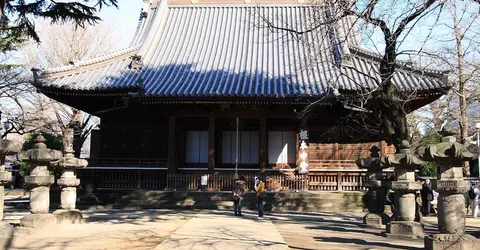
Kanei-ji is one of the temples to visit during the pilgrimage
Flick/maysight
A pilgrimage that can pay off
Very popular with Tokyoites at the start of the year, the Yanaka pilgrimage attracts crowds.
To encourage pilgrims in their quest for happiness, the merchants association of the shopping street " Yanaka Ginza Shopping Street " then had the idea of organizing a race on the first weekend of the year.
The first 100 participants to present their go oshuinch o ( booklet in which seals are collected) at the association stand provided for this purpose will thus be offered a cup of tea and the possibility
Take part in a big draw to try to win prizes specially offered by local merchants!
